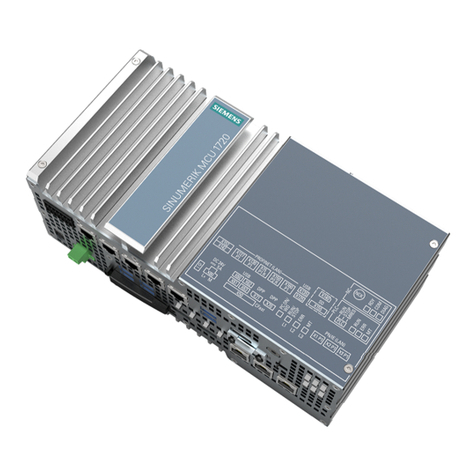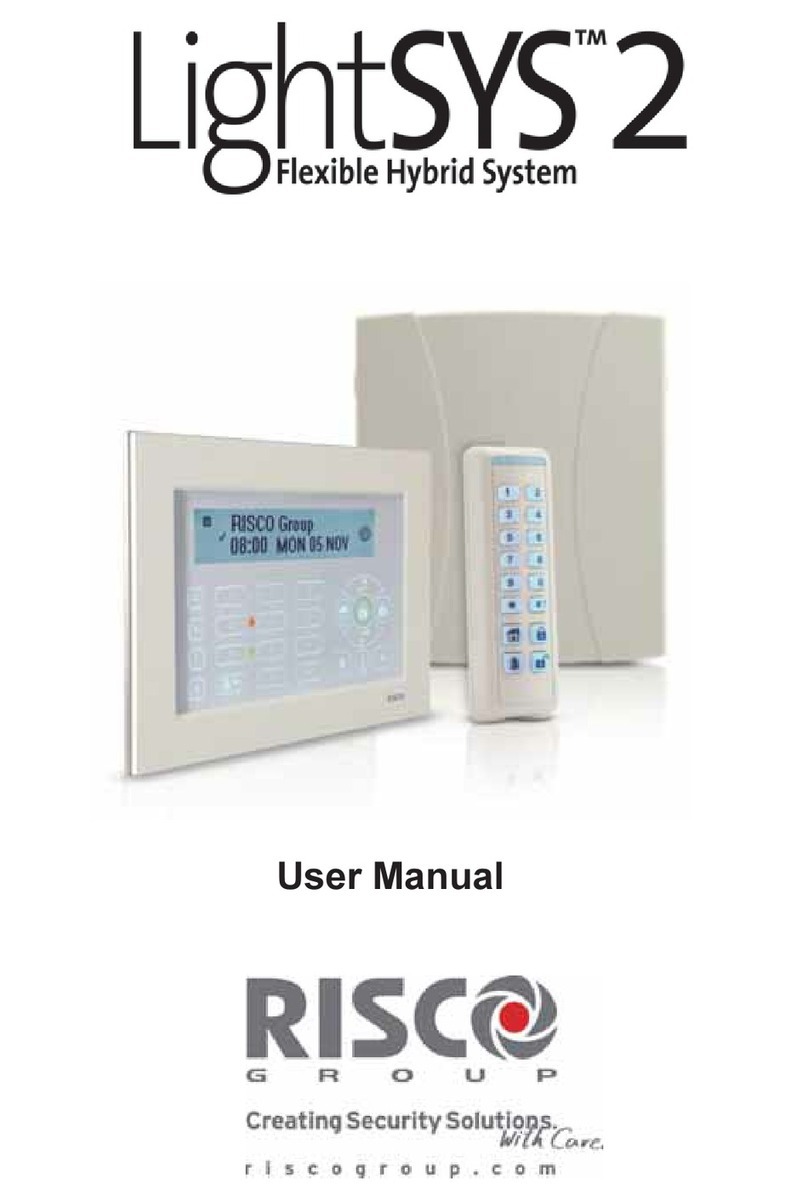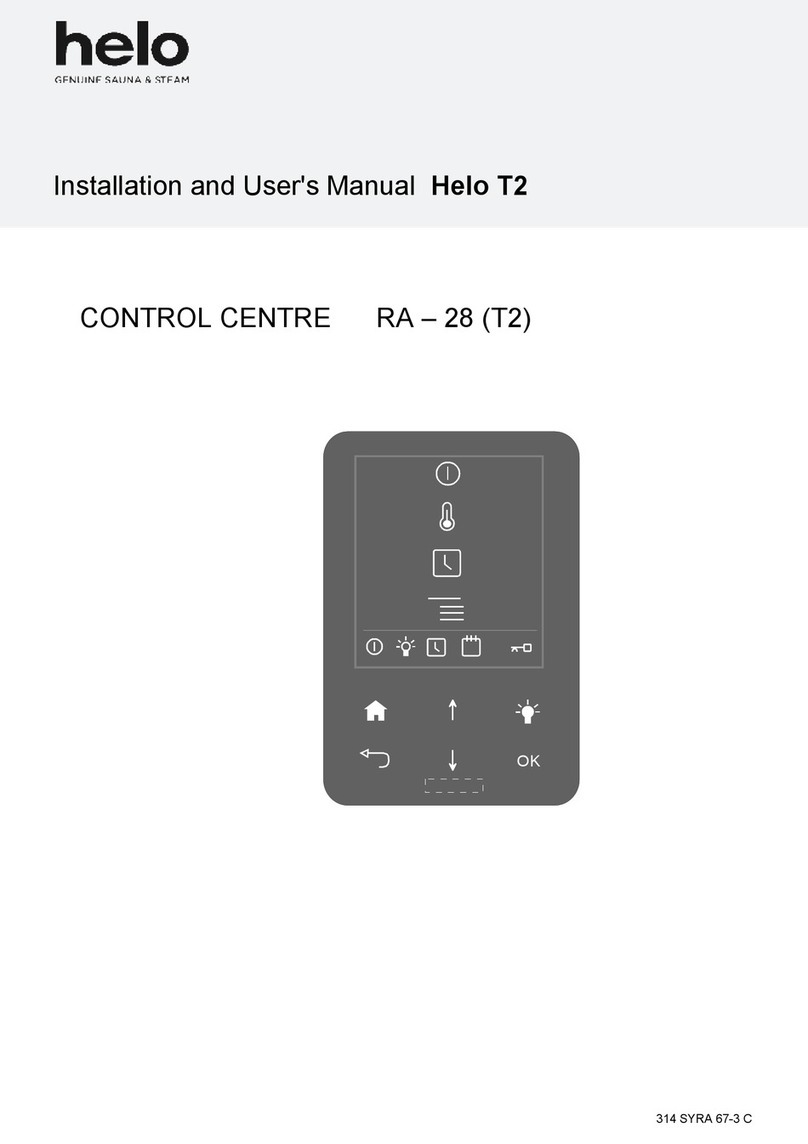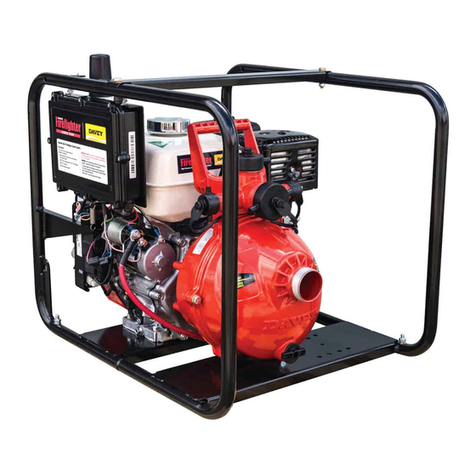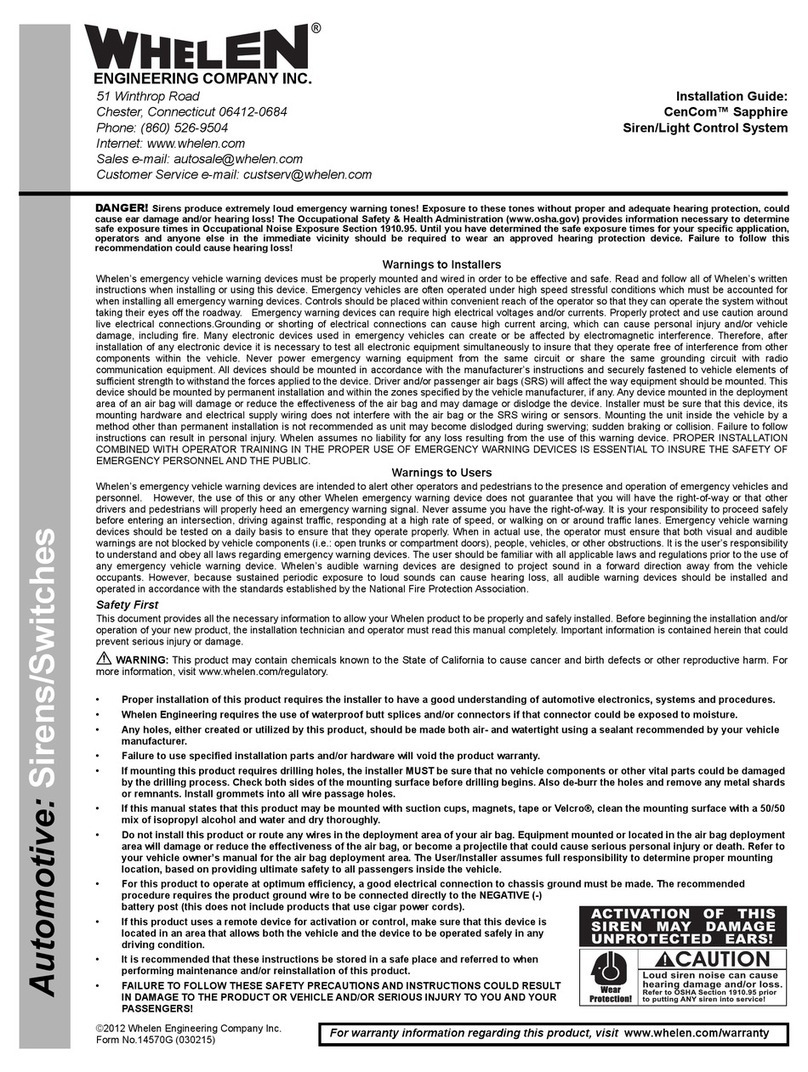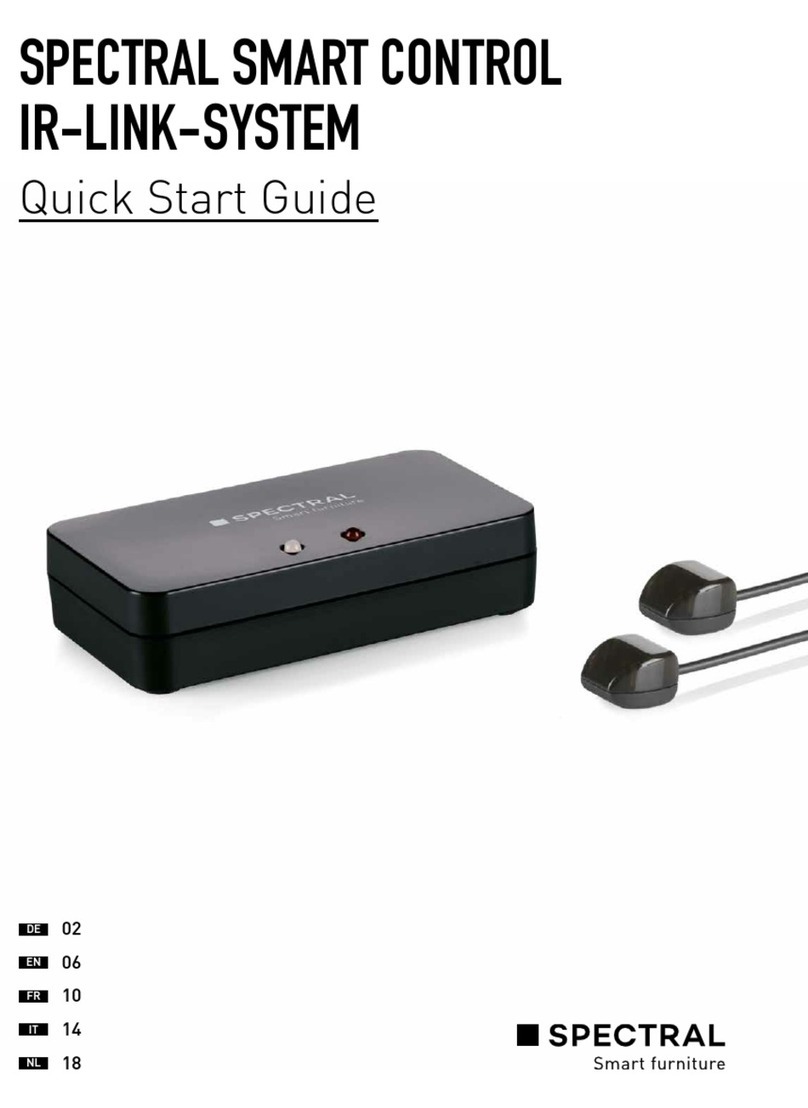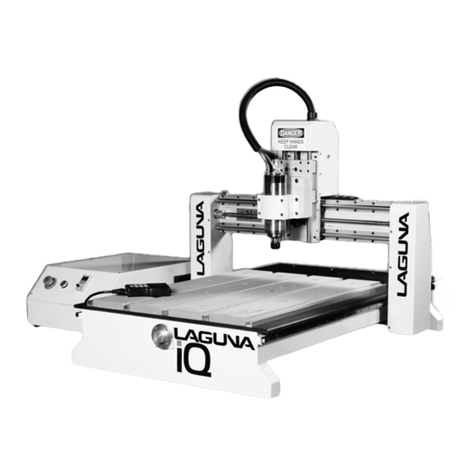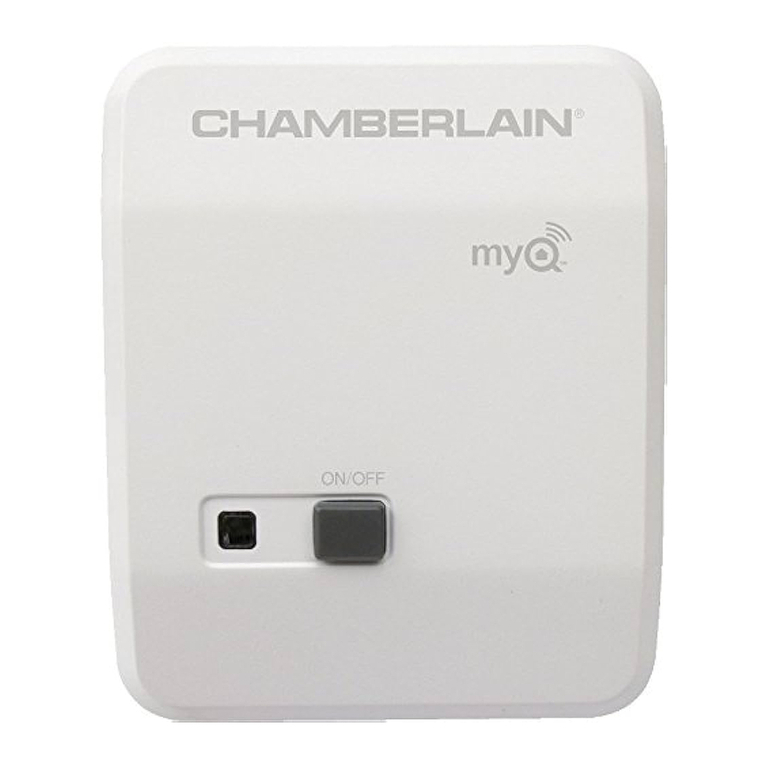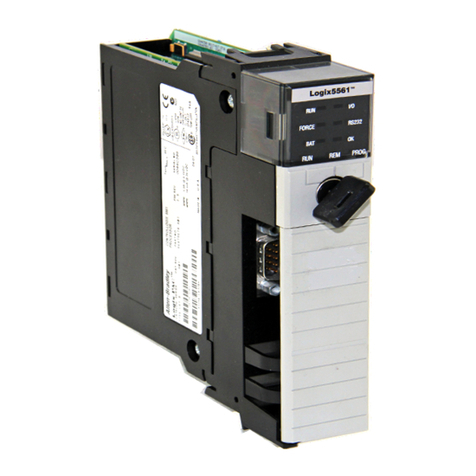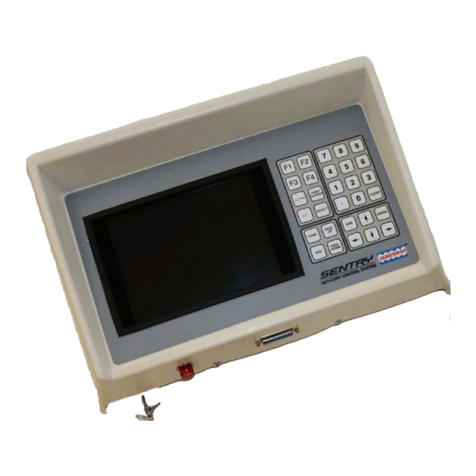GRASL RWZ 5 f Owner's manual

K + G Pneumatik GmbH • In der Krause 48
52249 Eschweiler • Deutschland / Germany
. +49 (0) 24 03 / 99 50 - 0 • ; +49 (0) 24 03 / 655 30
_ [email protected] • # www.kg-pneumatik.de
GRASL Pneumatic-Mechanik GmbH • Europastraße 1
3454 Reidling • Österreich / Austria
. +43 (0) 22 76 / 21 200 - 0 • ; +43 (0) 22 76 / 21 200 - 99
_ [email protected] • # www.graslrwa.at
Smoke and Heat Ventilation
Pneumatic - Electronic
Control S
y
stems
B010001, B020001
Installation and Operation
Instructions
Version 2/21
SHEVS Control Centre
RWZ 5 f

SHEVS Control Centre RWZ 5 f
Please read these instructions carefully.
Work at the Control Centre may be performed only by qualified personnel.
Symbols used:
o
= Trouble-free operation a =Button / travelling command
"OPEN" S = Warning tone / buzzer
r
= Alarm z =Button / travelling command
"CLOSED"
l
= Strobe
s
= Fault
A
= "OPEN" position
h= Ventilation position
9 = Maintenance
W = Wind
D
= Ventilation time
R = Rain
T
= Automatic fire detector
t
= Manual call point
Y = Fire Alarm Control Panel
(FACP)
RWZ5f-A2-1-EN.docx Errors and omissions excepted Ver. 2/21 Mo 11 Oct. 2021
Contents
Page
1Concept of Control Centre ................................................................................................................................ 3
1.1 Options / Accessories ................................................................................................................................... 3
2Putting into service / Putting out of service ................................................................................................... 3
2.1 Installation / Putting into service ................................................................................................................... 3
2.2 Putting out of service .................................................................................................................................... 4
3Functions and operation ................................................................................................................................... 4
3.1 Indicators / control elements of the Control Centre ...................................................................................... 4
3.2 Group configuration and selectable functions .............................................................................................. 5
3.3 Indicators / functions of the manual call points ............................................................................................ 6
3.4 Alarm functions ............................................................................................................................................. 6
3.5 Ventilation functions ..................................................................................................................................... 6
3.5.1 Manual ventilation .............................................................................................................................. 6
3.5.2 Setting the ventilation position h ..................................................................................................... 6
3.5.3 Setting the ventilation time D ........................................................................................................... 7
3.5.4 Indication of position A in the ventilation button .............................................................................. 7
3.5.5 External Wind and Rain Control (WRC) ............................................................................................ 7
3.6 Repetition of cycle z ..................................................................................................................................... 7
3.7 Mains failure ................................................................................................................................................. 8
4Maintenance ....................................................................................................................................................... 8
5Detection of fault / Troubleshooting ................................................................................................................ 9
5.1 General instructions ...................................................................................................................................... 9
5.2 Service display ............................................................................................................................................. 9
6Technical Data ................................................................................................................................................. 10
6.1 Versions ...................................................................................................................................................... 10
6.2 Performance data and characteristics ........................................................................................................ 10
7 Connection and layout diagrams from A - 1

SHEVS Control Centre RWZ 5 f
3
1Concept of Control Centre
● SHEVS Control Centre with four outputs for connecting 24 V actuators (RWZ 5f-xx) or 48 V actuators
(RWZ 5f-xx-48V)
● Functions according to EN 12101-10 (power supply), ISO 21927-9 (control), VdS 2581 and VdS 2593
● Selectable group configuration: one or two SHE groups, up to four ventilation groups
● For every SHE group, two signal lines:
− Line T: Automatic fire detectors or fire alarm control panel (FACP)
− Line t: Manual call points RT 2 or RT 4 (main alarm point RT 2/4-*-BS or secondary alarm point
RT 2/4-*). Connectable versions see section 6 “Technical Data”
● Line Y for connecting a FACP (activating the alarm in both SHE groups)
● Reset the alarm / the detectors using the button in the main alarm point or in the Control Centre
● Selectable functions:
− “Auto Close” (automatic closure after resetting an alarm)
− “Fault = Alarm” (fault in a signal line will trigger an alarm)
− “Automatic OFF” (automatic travel commands - apart from the alarm - are disabled)
− “Thermal Alarm” (alarm on exceeding an enclosure inside temperature of 70 °C)
− “2-detector-dependency” (2-detector dependency for automatic fire detector in line T)
− “WRC” (automatic closure in the case of active wind and rain control)
● Possibility of connecting ventilation button for each ventilation group, also with indication of position A
● For each actuator output adjustable ventilation position h and ventilation time D
● Possibility of connecting an external wind and rain control, e.g., type WRS. Internal wind and rain control, op-
tional
● Internal service display for indicating the detailed status
● The use of K + G / Grasl actuators is recommended. When controlling 3rd party actuators, compatibility is to
be checked. Also note section 6 „Technical Data“ for this
● Connectable actuators: 24 V / 48 V actuators, travelling time for full stroke at rated load (total travelling time)
< 4 minutes
● When directly changing the sense of travel, the actuators are stopped briefly before change of sense
● Sheet steel enclosure, light grey (RAL 7035)
1.1 Options / Accessories
● PK: Potential-free contacts (PFC) for alarm and/or fault forwarding
● PK-SA: Potential-free contacts for forwarding indication of position
● WTM: Outputs for controlling external warning devices in case of alarm or fault
● WRM: Internal wind and rain control. Connection of wind sensor WM and/or rain sensor RS is required (ac-
cessory)
iThe PK-SA and WTM options cannot be provided at the same time!
2Putting into service / Putting out of service
Work may be performed only by qualified personnel!
Before starting any work, it is mandatory to deflect static charge!
We do not assume any guarantee or liability for defects caused by faulty connection.
i
Planning and design of SHEVS require observation of the following rules, as far as applicable: National build-
ing codes/model building code and regulations of local building and fire safety authorities, VDE regulations
(particularly VDE 0100, 0108 and 0833), VdS Guidelines 2098 and 2221, DIN 18232, EN 12101, DIN 4102,
model line systems policy.
2.1 Installation / Putting into service
!
Perform work only in de-energised condition!
!Actuators must not be actuated directly (e.g., with external accumulators during installation / maintenance)
when they are already connected. This can lead to defects in the power output.
● Fasten the enclosure securely to a wall using suitable mounting material. Guide the connection cables
through the openings provided and wire them according to the connection diagrams.
● Make function settings (see 3.2).

SHEVS Control Centre RWZ 5 f
4
● Turn on line voltage. The indicators and the service display light up briefly. Subsequently, the indicator s
flickers for about 15 s (calibration process). If the indicator s is permanently lit, there is a fault in a signal line
(see 5).
● Insert the accumulators in the enclosure as illustrated on the “Line voltage, Installation, Accumulators” plan
and connect them.
● The indicator o lights up, the indicator s goes out, the system is ready for operation. If a fault is still dis-
played, follow the instructions in section 5 “Detection of fault / Troubleshooting”. If necessary, decommission
the Control Centre again (see 2.2).
● While putting into service, check all functions and indicators of the Control Centre and its components. The
individual functions are described in section 3. Also simulate faults and check detection (see 5).
● To finish putting into service, retract all actuators completely (press button z).
iAfter about 24 hours of continuous operation without mains failure, the accumulators are sufficiently charged
to achieve the full standby time in case of mains failure.
2.2 Putting out of service
● Disconnect the accumulators from the Control Centre (remove accumulator connection line or fuses F2.1 and
F2.2).
iCharged accumulators have a shelf-life of about 6 months. They must be recharged if stored for a longer
period.
● Switch off line voltage.
3Functions and operation
Before touching the control elements in the Control Centre it is mandatory to deflect static charge!
3.1 Indicators / control elements of the Control Centre
● Indicators on the logic board:
− o (green): Trouble-free operation. Goes out when a fault is detected.
− r1 / r 2 (red): Alarm in SHE group 1 / 2, see 3.4.
− s 1 / s 2 (yellow): Fault in SHE group 1 / 2, see 5.
− w (blue): Wind and Rain Control is active.
− 9 (blue): Maintenance is due (flashes) or maintenance mode enabled (lights up).
− 88 (red): Service display, see 5.2.
− a / z (blue): Travel command in OPEN / CLOSE direction active.
● Control elements on the logic board:
− Button Reset r: Resetting the alarm function of both SHE groups.
− Button Reset S: Switching off the warning tone in both SHE groups.
− Buttons h / D: Ventilation position h (see 3.5.2) and ventilation time D (see 3.5.3).
− Button Test r: Switching to accumulator mode and running the alarm function in both the SHE
groups for maintenance purposes.
PFC-r (PFC alarm) and buzzer S are not enabled.
− Button µC-Reset: For service purposes only.

SHEVS Control Centre RWZ 5 f
5
3.2 Group configuration and selectable functions
● “Group Configuration” DIP switches S1-1 through S1-3:
Configure the Control Centre (one or two SHE groups, up to four ventilation groups) according to the follow-
ing tables (* = factory setting):
One SHE group:
DIP switch Actuator output
S1-1 S1-2 S1-3 X1.1 X1.2 X1.3 X1.4
*
1nnn 1
2nnj 12
3njn 12 3
4njj1234
SHE
group 1
Two SHE groups:
DIP switch Actuator out
p
ut
S1-1 S1-2 S1-3 X1.1 X1.2 X1.3 X1.4
2jnj 12
3jjn 12 3
4jjj 1234
SHE
g
rou
p
1
SHE
g
rou
p
2
Vent.
group
j = DIP switch ON
n = DIP switch OFF
V
entilation
groups
Vent.
group
j = DIP switch ON
n = DIP switch OFF
V
entilation
groups
● “Thermal Alarm” DIP switch S1-4:
In the ON position, the alarm function (see 3.4) is executed when the inside temperature of the enclosure ex-
ceeds 70 °C. Factory setting: OFF (no alarm when 70 °C is exceeded).
● DIP switches S1-5 and S1-6: Do not change setting. Factory setting: OFF.
● “Fault = Alarm” DIP switches S2-1 (SHE group 1) and S2-2 (SHE group 2):
In the ON position, the alarm function (see 3.4) is executed if a signal line is faulty. The alarm can also be re-
set by pressing the button Reset r in a main alarm point or the Control Centre before eliminating the fault. If
a switch is in ON position, then the function is also activated in line Y.
Factory setting: OFF (no alarm in case of fault).
● “2-detector-dependency” DIP switch S2-3 (SHE group 1) and S2-4 (SHE group 2):
In the ON position, two automatic fire detectors must have responded in line T before the alarm function
(see 3.4) is executed.
As soon as the first automatic detector has responded, the pre-alarm is activated: The indicators r on the
logic board and the manual call points flash, manual call points with buzzer S emit an intermittent warning
tone. After changing the switch position, a recalibration is performed automatically (see 2.1).
Factory setting: OFF (no 2-detector-dependency in line T).
!When the function is activated, note the changed terminating resistor (see connection diagram).
● “Automatic OFF” DIP switch S3-1 (ventilation group 1) to S3-4 (ventilation group 4):
In the ON position, the following automatic functions are disabled: Auto close, ventilation position and ventila-
tion time, repetition of cycle z and closing in case of mains failure or active wind and rain control. Actuators
operate during ventilator operation only if a button a / z is pressed. The indication of position is deactivated.
Factory setting: OFF (automatic enabled).
iWhen changing from position ON to OFF, the actuators are automatically retracted. Ventilation can be re-
sumed only after 4 minutes.
● “Auto Close” DIP switches S4-1 (actuator output 1) to S4-4 (actuator output 4):
In the ON position, the actuators are automatically retracted after resetting an alarm. When the function re-
sponds, ventilation can be resumed only after 4 minutes.
Factory setting: ON (automatic closure is activated).
● “WRC” DIP switch S5-1 (actuator output 1) to S5-4 (actuator output 4):
In the ON position, the actuators are automatically retracted if a wind and rain control is activated.
Factory setting: ON (automatic closure in the case of active wind and rain control).
iIn the OFF position, the respective output can be actuated by the corresponding ventilation button even
when the WRC is active.
Left tabular section:
DIP switch setting to be made for
the desired number of ventilation
groups.
Right tabular section:
Resulting classification of the
actuator outputs for SHE and/or
ventilation group.

SHEVS Control Centre RWZ 5 f
6
3.3 Indicators / functions of the manual call points
● For activation and reset, see 3.4.
● Indicators:
− r (red, RT 2/4-*): Alarm, see 3.4.
− o (green, RT 2/4-*-BS): Trouble-free operation. Goes out when a fault is detected.
− s (yellow, RT 2/4-*-BS): Fault, see 5.
● Button Reset r (RT 2/4-*-BS):
Reset the alarm function (accessible after opening the door with a key).
● Manual call point with buzzer S for alarm and fault signal (RT 2/4-*-BS-AA):
The buzzer emits a continuous tone in the event of alarm, and an intermittent warning tone in the event of
pre-alarm or fault. The warning tone is switched off by pressing the button Reset S.
3.4 Alarm functions
During the execution of an alarm function the ventilation functions are disabled.
iWhen configuring 2 SHE groups (see 3.2), the following description applies accordingly to the second group.
● Alarm function: Upon detecting an alarm, the actuators of the SHE group are fully extended. The indicator
r lights up and manual call points with buzzer S emit a continuous tone. Repetition of cycle a is executed for
30 minutes (extend, briefly retract, extend again).
● Resetting the alarm function: Resetting is done by briefly pressing the button Reset r in a main alarm
point or the Control Centre. Then the indicators r will go out and the buzzers S will be switched off.
iIf the actuators are retracted by pressing the button zafter an alarm has been reset, ventilation can be
resumed only after 4 minutes.
● Manual call points: For manual alarm signalling, break open the glass of the manual call point and press the
control button until the indicator r confirms the detection of the alarm.
For maintenance work, the door of the manual call point can be opened with a key.
● Automatic fire detectors: The alarm is triggered automatically (depending on the type of detector due to
smoke and/or heat detection).
If an automatic fire detector responds immediately after resetting, press the button Reset r again (smoke
particles may still be present in the detector).
● Fire Alarm Control Panel (FACP): When an alarm is signalled by the FACP, the alarm function will be exe-
cuted in both SHE groups. The alarm is reset at the FACP.
iOther alarm functions (“Fault = Alarm”, “Thermal Alarm”, “2-detector-dependency”, “Auto Close”) see 3.2.
3.5 Ventilation functions
iConfiguration of ventilation groups: see 3.2.
iThe ventilation position, the ventilation time and the wind and rain control are disabled as long as the function
“Automatic OFF” is enabled (see 3.2). Actuators operate only if a button a / zis pressed.
!When performing ventilation functions, do not exceed the duty cycle of the actuators.
3.5.1 Manual ventilation
● After briefly pressing a ventilation button (a / z), the actuators of the ventilation group travel up to the end po-
sition or the set ventilation position h (see 3.5.2). Pressing it again stops the actuators. By pressing the but-
ton for the reverse direction of travel, the travelling direction is reversed after a brief stop.
● When pressed longer (> 1 s), the actuators travel as long as the button remains pressed. It is also possible to
travel up to the end position or up to the set ventilation position.
3.5.2 Setting the ventilation position h
iThis setting can only be made when the system has no faults and WRC is not active.
Initially, all actuators must be completely retracted and the travel command zhas to have finished.
● Set the travelling times towards OPEN and CLOSED to define the desired ventilation position.
Factory setting: 15 s travelling time OPEN, 30 s travelling time CLOSE.
The ventilation position can be enabled / disabled for each actuator output:

SHEVS Control Centre RWZ 5 f
7
− Enabling / disabling the ventilation position: Press button h for longer than 3 s. The display briefly shows
1(enabled) or 0 (disabled).
− Reset to factory setting: Press button h for longer than 6 s. The display briefly shows ?.
● The travelling times can be set for each actuator output or for each ventilation group.
o Setting the travelling times for each actuator output (ox):
− Briefly press the button h to enter programming mode for the respective actuator output
(display: ox)
− Briefly press button h to extend the actuators. When the desired ventilation position is reached,
press the button h again.
− Briefly press button h to retract the actuators. When all actuators are completely retracted, press the
button h again. The indicator ox goes out.
− The actuators automatically travel to the ventilation position for verification and then retract again.
o Setting the travelling times for each ventilation group (Lx):
− Briefly press the button h to enter programming mode for the respective ventilation group
(display: ox) and then press the associated button D (display: Lx). The indicator A flashes in the
ventilation buttons of the group.
− Briefly press a ventilation button a to extend the actuators. When the desired ventilation position is
reached, press the ventilation button a again.
− Briefly press a ventilation button z to retract the actuators. When all actuators are completely re-
tracted, press the ventilation button z again. The display Lx goes out.
− The actuators automatically travel to the ventilation position for verification and then retract again.
iIf a changeover contact is used for ventilation, then the ventilation position can only be set for each actua-
tor output.
i If an indicator aflickers when activating the programming mode, then the actuators of the related output
are not fully retracted and the ventilation position cannot be set. By pressing the button h, closing can be
activated for these outputs (display: üx).
iThe programming mode is cancelled automatically after 15 minutes without button activity or manually by
double clicking on the button Reset S.
3.5.3 Setting the ventilation time D
● The ventilation time can be set for each actuator output in 5-minute steps (5 to 30 minutes) using button D.
The first press displays the set value, pressing again changes the value. After the set time has elapsed, the
actuators retract automatically. With setting 0 the ventilation time is deactivated (= factory setting).
3.5.4 Indication of position A in the ventilation button
● The indicator
− lights up: Actuators are in OPEN position
− flickers: A travel command is active
− blinks: Ventilation function is blocked (also see the indicator in the device)
− flashes: Ventilation position can be set with this button (see 3.5.2)
In case of a travel command towards CLOSED, the indicator goes out latest after 4 minutes
iIn case of a mains failure or if the function “Automatic OFF” is enabled (see 3.2), the indicator is disabled.
3.5.5 External Wind and Rain Control (WRC)
● If the wind and rain control is active, the actuators are retracted automatically. The ventilation functions are
disabled. The indicator w on the logic board lights up, until the WRC releases the ventilation functions once
again. An alarm has priority.
i
Note the setting of the “WRC” function (see 3.2).
3.6 Repetition of cycle z
● If not all actuators are properly retracted (e.g., actuator has switched off due to a gust of wind), the repetition
of cycle function can be activated by briefly pressing the ventilation button z. The actuators are briefly ex-
tended and following the closing command is executed once again.
i
Note the setting of the function “Automatic OFF” (see 3.2).

SHEVS Control Centre RWZ 5 f
8
3.7 Mains failure
● In case of mains failure, the accumulators cannot be charged, but they provide the operating power for the
standby time. Actuators in ventilation position are retracted and pressing the ventilation button a is ignored.
Alarm functions are not affected by the mains failure.
The mains failure must be rectified immediately to prevent the deep-discharge protection from responding, to
recharge the accumulators, and to ensure safe functioning of the system.
i
Note the setting of the function “Automatic OFF” (see 3.2).
● Deep discharge protection: If the accumulators are in critical condition, the device is switched off com-
pletely. However, a low quiescent current continues to flow (in addition to the natural self-discharge). There-
fore, without recharging, there is a risk of permanent damage to the accumulators after only a few days.
4Maintenance
● In the course of maintenance - unless other local regulations apply - check all the functions and displays of
the device and the components at least once a year. This also includes checking the terminal points, connec-
tion cables, indicators and fuses, and cleaning of various components, if necessary.
The individual functions are described in section 3. Likewise simulate faults of the signal lines and power sup-
ply and check the detection (see 5).
● Maintenance due indication
If the maintenance company has enabled this function, the indicator 9 flashes after about 11 months of ser-
vice life. After about 14 months, the overdue maintenance leads to the indication of a fault s.
● Accumulators:
− Check the accumulators at least once a year for proper functioning. They should be replaced following a
typical service life of 3, but no more than 4 years in an ambient temperature of 20 °C. For every 10 °C rise
in ambient temperature, the service life decreases by about 1 year!
− Checking the accumulators:
Press the button Test r (test alarm is executed in accumulator mode) and completely extend the actua-
tors. If the accumulator voltage drops too low during this, the accumulators are defective. A fault will be
displayed until the accumulators have been replaced.
After testing the accumulators, reset the test alarm (press button Reset r briefly) and retract all actuators
again.
iA quick check of the accumulators with low load takes place automatically every 60 minutes.
− The end user, i.e., the final owner, has to return used batteries / accumulators to a distributor or public
waste management company. This obligation to return applies regardless of whether it is a private or com-
mercial end user.
− If the system needs to be put out of service / temporarily shut down, the accumulators have to be dis-
connected and the mains voltage has to be switched off!
− Accumulators that are charged but not yet connected have a shelf-life of about 6 months. They must be
recharged if stored for a longer period.
!Actuators must not be actuated directly (e.g., with external accumulators during installation / maintenance)
when they are already connected. This can lead to defects in the power output.

SHEVS Control Centre RWZ 5 f
9
5Detection of fault / Troubleshooting
5.1 General instructions
Occurrence of a fault is indicated by flashing of the indicator s in main alarm points and in the device. With the
help of the service display, the cause can be limited (see 5.2).
● The following are detected as faults:
− Accumulator or mains failure, accumulator polarity reversed
− Failure of the fuses F1 to F3
− Wire-break or short-circuit of the signal lines
− Wire-break or short-circuit of the actuator line (unbranched common line)
− Maintenance overdue (if the maintenance indicator was enabled)
● Notify the maintenance company in case of faults.
● Spare material: In the device, there is a bag of spare fuses and resistors.
● Automatic calibration in case of a fault in the signal line T: After rectifying a fault that was present for
more than 10 minutes, the line is automatically calibrated. The indicator s flickers for about 15 s. If the indi-
cator s then lights up continuously, there is another fault.
5.2 Service display
● Operating conditions can be accurately displayed with the help of the service display.
The display is switched off in normal condition. It can be switched on for 120 s by pressing the button Reset S
for 4 s.
● If there is no alarm / fault message pending, the memory content of the display can be shown for 1 s by briefly
pressing the button Reset r (alarm memory) or the button Reset S (fault memory).
● In case of alarm, fault or automatic closing, the display is switched on, but switched off again after 10 s in the
event of a power failure. In this case it can be switched on again for 10 s by pressing the button Reset S for
4 s.
Operating conditions:
Code Description Code Description
01 Mains failure or fuse F1.1 blown 81 Line Y: Alarm
02 Fuse F1.2 blown 82 Line Y: Wire-break
03 Fuse F1.3 blown 83 Line Y: Short-circuit
11 Wire-break of accumulators or F2.1 blown 84 Line Y: Undefined 1
12 Fuse F2.2 blown 9x Line X4.x "Fault = Alarm" active
2x Actuator output x: Fuse F3.x blown ( “Automatic OFF” with changeover contact
3x Actuator output x: Wire-break / short-circuit Lx Setting Ventilation position Group X2.x
41 Line T X4.1: Alarm nx Line T X4.x: Pre-alarm
42 Line T X4.1: Wire-break ox Setting Ventilation position Output X1.x
43 Line T X4.1: Short-circuit px Ventilation in group X2.x with changeover con-
tact
44 Line T X4.1: Undefined 1 q Alarm through internal thermal sensor
51 Line t X4.1: Alarm t Accumulator test active
52 Line t X4.1: Wire-break U Accumulator is defective
53 Line t X4.1: Short-circuit y Accumulator polarity reversed
54 Line t X4.1: Undefined 1 -- Memory alarm / fault empty
61 Line T X4.2: Alarm üx Automatic closing Output X1.x
62 Line T X4.2: Wire-break äx Reset button r X4.x: Short-circuit
63 Line T X4.2: Short-circuit Äx Reset button S X4.x: Short-circuit
64 Line T X4.2: Undefined 1 $ Test alarm active
71 Line t X4.2: Alarm # Maintenance is due
72 Line t X4.2: Wire-break *x Error (x), service required
73 Line t X4.2: Short-circuit
74 Line t X4.2: Undefined 1
Accumulator-charging phases:
[i.] = I-charging, [u.] = U-charging, [o.] = trickle charging, [n.] = standby, [.] = no charging.
1In case of displays x4, check whether the proper terminating resistor was used (see connection diagram)

SHEVS Control Centre RWZ 5 f
10
6Technical Data
6.1 Versions
24 V - t
y
pes RWZ 5f-20 RWZ 5f-40
Item number 8100 5620 1000 8100 5640 1000
Total output curren
t
20
A
(
24
V-
/
480
W
)
40
A
(
24
V- / 960
W
)
Current inpu
t
2.5
A / 230
V~ 5.0
A / 230
V~
Inrush current ca. 80
A
ca. 115
A
A
ccumulators
(
VRL
A
-
A
GM
)
2 x 12
Ah / 12
V 2 x 17
Ah / 12
V
48
V - t
y
pes RWZ 5f-10-48
V
RWZ-5f-20-48
V
Item number 8100 5610 1100 8100 5620 1100
Total output curren
t
10
A
(
48
V-
/
480
W
)
20
A
(
48
V- / 960
W
)
Current inpu
t
2.5
A / 230
V~ 5.0
A / 230
V
Inrush current ca. 80
A
ca. 115
A
A
ccumulators
(
VRL
A
-
A
GM
)
2 x 12
Ah / 12
V 2 x 17
Ah / 12
V
Only supplied or approved accumulators may be used.
See compatibilit
y
list on: www.k
g
-pneumatik.de
(
Electronics - S
y
stem Accessories -
A
ccumulators
)
The requirements of Directives 2014/35/EU and 2014/30/EU are met. c
Suitable for operation in residential, business and commercial areas.
6.2 Performance data and characteristics
General
Line voltage supply
Circuit breaker with tripping characteristics C needed
Internal suppl
y
volta
g
e / standb
y
time
230 V~ / 50 - 60 Hz
24
V-/ 72
h
(
mains failure
)
Dimensions in mm
Cable entry through membrane grommets (from above)
2 housin
g
openin
g
s
(
from behind
)
W 430 x H 525 x D 185
13 x M16, 1 x M20, 8 x M25
144 x 34
mm
(
W x H
)
Environmental class 1 (EN 12101-10 / ISO 21927-9) / III (VdS 2581)
Relative humidity
Enclosure protection ratin
g
-5 °C … +40 °C
20 % … 80 %, non-condensing
IP30
Installation dimensions, see “Line voltage, Installation, Accumulators” diagram.
Not suitable for outdoor use. Protect from direct sunlight, humidity and excessive formation of dust! Preferably,
the installation should be carried out in dr
y
, heated rooms.
Signal lines
Line monitorin
g
wire-break, short-circui
t
Line T:
Automatic fire detectors:
Smoke detector / heat detector (RM 2 / TM 2 or RM 3 / TM 3)
or
Fire alarm control panel
20 pieces per SHE group, of which
max. 10 heat detectors 1
NC / NO contac
t
Line t, manual call point:
− RT 2/4-* r
− RT 2/4-*-BS ros
− RT 2/4-*-BS-AA rosS
total of 10 pieces per SHE group, of
which max. 3 pieces with buzzer S
Line Y, Fire Alarm Control Panel NC / NO contac
t
Inputs / Outputs
Ventilation buttons LT az
Ventilation buttons LT x-A azA
unlimited per ventilation group
10 pieces per ventilation
g
roup
Wind and Rain Control
(
t
y
pe WRS
)
NC contact 2
1Heat detector: TM 2-D (65-55000-122), TM 2-M (65-55000-137), TM 3-D (FD-851RE), TM 3-M (FD-851HTE), RM 3-OT (SD-851-TE),
Optical detector: RM 2-O (65-55000-317), RM 3-O (SD-851-E)
2In the WRC, a separate contact is required for each Control Centre to be controlled

SHEVS Control Centre RWZ 5 f
11
Actuator outputs 24 V - types (RWZ 5f-xx)
Rated voltage
Operating mode / duty cycle
Maximum cross-section of the supply line
Line monitorin
g
(
unbranched common line
)
24 V- (+6 V / -4 V)
S3 30 %
4 x 10 mm² (rigid)
wire-break, short-circui
t
Permissible current per output / permissible total current
Output 12341234
Current 16 A 8 A 16 A 8 A 16 A 8 A 16 A 8 A
Total current 20 A 20 A
RWZ 5f-20 RWZ 5f-40
20 A
The permissible cable length between the control centre and the actuator control / the actuator depends on
their respective minimum permissible operation voltage and the conductor cross section.
In case of a voltage drop of 1 V (simple arrangement without extensive branching), the following applies:
Current
Cross-section 2.0 A 4.0 A 6.0 A 8.0 A 10.0 A 12.0 A 14.0 A 16.0 A
2 x 1.5 mm² 22 m 11 m 7 m 5 m 4 m 4 m 3 m 3 m
2 x 2.5 mm² 36 m 18 m 12 m 9 m 7 m 6 m 5 m 5 m
2 x 4.0 mm² 58 m 29 m 19 m 15 m 12 m 10 m 8 m 7 m
2 x 6.0 mm² 87 m 44 m 29 m 22 m 17 m 15 m 12 m 11 m
2 x 10.0 mm² 145 m 73 m 48 m 36 m 29 m 24 m 21 m 18 m
4 x 1.5 mm² 44 m 22 m 15 m 11 m 9 m 7 m 6 m 5 m
4 x 2.5 mm² 73 m 36 m 24 m 18 m 15 m 12 m 10 m 9 m
4 x 4.0 mm² 116 m 58 m 39 m 29 m 23 m 19 m 17 m 15 m
4 x 6.0 mm² 174 m 87 m 58 m 44 m 35 m 29 m 25 m 22 m
4 x 10.0 mm² 290 m 145 m 97 m 73 m 58 m 48 m 41 m 36 m
When 4 cores are used,
connect 2 cores each
in parallel.
Actuator outputs 48 V - types (RWZ 5f-xx-48V)
Rated voltage
Operating mode / duty cycle
Maximum cross-section of the supply line
Line monitorin
g
(
unbranched common line
)
48 V- (+1 V / -2 V)
S3 30 %
4 x 6 mm² (rigid)
Wire-breaka
g
e, shor
t
-circuit
Permissible current per output / permissible total current
Output 12341234
Current 5 A 5 A 5 A 5 A 5 A 5 A 5 A 5 A
Total current 10 A 10 A
RWZ 5f-10-48V RWZ 5f-20-48V
10 A
The permissible cable length between the control centre and the actuator control / the actuator depends on
their respective minimum permissible operation voltage and the conductor cross section.
In case of a voltage drop of 4 V (simple arrangement without extensive branching), the following applies:
Current
Cross-section 1.0 A 2.0 A 3.0 A 4.0 A 5.0 A
2 x 1.5 mm² 174 m 87 m 58 m 44 m 35 m
2 x 2.5 mm² 290 m 145 m 97 m 73 m 58 m
2 x 4.0 mm² 464 m 232 m 155 m 116 m 93 m
2 x 6.0 mm² 696 m 348 m 232 m 174 m 139 m
4 x 1.5 mm² 348 m 174 m 116 m 87 m 70 m
4 x 2.5 mm² 580 m 290 m 193 m 145 m 116 m
4 x 4.0 mm² 928 m 464 m 309 m 232 m 186 m
4 x 6.0 mm² 1392 m 696 m 464 m 348 m 278 m
When 4 cores are used,
connect 2 cores each
in parallel.
Fuses
Mains primary (miniature fuse 5 x 20 mm)
Accumulators (blade fuse 19 mm)
Actuators (mini blade fuse 11 mm) RWZ 5f-xx
RWZ 5f-xx-48V
F1.1, F1.2, F1.3: T 4 A
F2.1, F 2.2: 30 A
F3.1, F 3.3: 20 A, F3.2, F3.4: 10 A
F3.1 - F3.4: 15
A

RWZ5f-A2-1.sch
SHEVS Control Centre RWZ 5f
RWZ 5
Page A-4
Page A-3
2
FACP
F
2x0.8
RM 2 / TM 2
RM 3 / TM 3
3x1.5² L/N/PE L/N/PE
3x1.5² 4x0.8
WM / RS
Page A-7
Page A-8
or
Mains
bWRC
WM / RS
4x0.8 (max. 100 m)
Option PK
Option WTM
3x1.5² (230 V~) / 3x0.8 (30 V-)
r
PFC
s
PFC
MS BL
b
RWZ5f-A2-2.sch
Ver. 2/21 Mo 11 Oct. 2021
2x0.8 2x0.8 2
3x0.8
8x0.8
6x0.8 3x0.8
RT 2/4-*-BS-AA RT 2/4-*-BS RT 2/4-*
3x0.8
LT LT
r
H
][
Smoke ExhaustSmoke Exhaust
r
o
sH
] [
r
o
sH
] [
S
Smoke Exhaust
Page A-4
Page A-7
1)
1)
j
j
2) 2)
jj
2)
j
3)
3)
3)
j
j
j
2)
j
1A - 8/
SHEVS Control
1st SHE group
1st SHE group
PFC
A
1 ... 4
Option PK-SA
4)
j
4)
j
4)
j
4)
j
Option WRM
4)
j
RT 2: Page A-5
RT 4: Page A-6
2x0.8 for WRS
4x0.8 for option WRM
(6x0.8 with external reset button)
Wind and Rain Control (WRC)
General: length of cable max. 400 m, if not specified otherwise.
Run the supply line unbranched
to under the roof.
For permissible cable length, see
section "Technical Data".
When using 4 cores (2 cores each
in parallel) greater lenghts can be
achieved.
Max. 10 mm² (rigid) can be clamped (RWZ5f-xx),
max. 6 mm² (rigid) can be clamped (RWZ5f-xx-48V).
4x0.8 for LT x-A
Number of wires depends
on type and order of
connection of the manual
call points.
1st ventilation group
1st SHE group / 1st ventilation group / 1st actuator output
Further groups:
Separate documentation
Cable types (examples):
Signal lines: J-Y(St)Y 2x2x0.8 - 4x2x0.8
Mains: NYM-J 3x1.5 mm²
PFC: NYM-J 4x1.5 mm² / NYM-O 3x1.5 mm²
The connection of components in further SHE or ventilation groups
is carried out according to the examples given for the 1st group.
Example of connection on page A-2, detailed examples on the following pages.
System diagram (please consider local conditions / components)
3x0,8 (30 V-)
(per ventilation group)

RWZ5f-A2-2.sch RWZ5f-A1-3.sch
Ver. 2/21 Mo 11 Oct. 2021 2A - 8/
X5
FACP
F
NO C
Rab (10k)
Ral (1k5 / 0.5 W)
Rab (10k)
Y
P
X2.x
WM / RS
WRS 2
4
LT
WRC
56
SHEVS Control Centre RWZ 5f
NPE 1 2 10
Rab (10k)
Reset
Smoke Exhaust
r
o
sH
] [
Rab (10k)
RM 3 / TM 3
RM 2 / TM 2 L1 inL1 outL2
235
L
X1.x X4.xX0
t
T
9876543
230 V~
50 - 60 Hz
Rend (2x10k)
r
r
o
s
12 15 16 17
P
z
a
21 22
Rend (2x10k)
j
j
j
j
3)
j
3)
1)
3)
1)
2)
j
2)
j
T
T
t
t
Y
Y
PE
N
L
X3
!
X2.x:
X4.x:
Terminal blocks of actuator outputs 1 - 4X1.x:
19 20
w
w
1)
j
a z
bn bu
bn bu
1098765
1098765
Line
RT 4-*-BS
(RT 2: see page A-5
RT 4: see page A-6)
Example of connection
Mains Actuators Line Line
Colour code for resistors: 10k = brown/black/black/red 1k5 = brown/green/black/brown
Remove link when con-
necting an external WRC.
WRC
In case of wrong travelling sense, reverse polarity of actuator cable.
Run the supply line unbranched to under the roof.
Observe instructions on
page A-4 for 2-detector-
dependency
Terminal blocks of SHE groups 1 + 2
Terminal blocks of ventilation groups 1 - 4
Connect resistor Rab to the last detector.
Connect resistors Rend to the last actuator.
Connect resistor Rab to
the FACP.
Connect resistor Ral (taped
to the door) additionally.
Ventilation buttons

RWZ5f-A1-3.sch
bu
bn
Rend
bn
bu
(2x10k)
Rend
(2x10k)
1
2
X1.1
2
1
RWZ5f-A2-4.sch
Ver. 1/21 Mo 28 Jan. 2021
SHEVS Control Centre RWZ 5f
a
-
z
+
+-
1)
j
1)
j
1)
j
!
1)
j
3A - 8/
Rend
(2x10k)
1
2
X1.2
2
1
a
-
z
+
+-
2nd actuator output
Rend
(2x10k)
1
2
X1.3
2
1
a
-
z
+
+-
3rd actuator output
Rend
(2x10k)
1
2
X1.4
2
1
a
-
z
+
+-
4th actuator output
bu
bn
RWZ 5f-xx:
RWZ 5f-xx-48V:
!Outputs for 24 V- actuators
Outputs for 48 V- actuators
24 V- actuators
1st actuator
2nd actuator
3rd actuator
Run the supply line unbranched
to under the roof
(monitored common line).
Colour code for resistors: 10k = brown/black/black/red
Actuators must not be actuated directly (e.g., with external accumulators during
installation / maintenance) when they are already connected. This can lead to
defects in the power output.
In case of wrong travelling sense,
reverse polarity of actuator cable.
1st actuator output
The connection is made as
shown for the 1st output,
but using terminal strip X1.2.
Load rating of the individual outputs: see section "Technical data".
Connect resistors Rend to the last actuator.
The connection is made as
shown for the 1st output,
but using terminal strip X1.3.
The connection is made as
shown for the 1st output,
but using terminal strip X1.4.

RWZ5f-A2-4.sch
X5
19
20
2x Rab (10k)
RWZ5f-A1-5.sch
Ver. 2/21 Mo 11 Oct. 2021
SHEVS Control Centre RWZ 5f
!
Rab (10k)
X4.1
Rab (10k)
T3
4
Rab (10k)
Y+
Y
-
Y
4A - 8/
1st SHE group
Line
Rab (10k)
X4.2
T3
4
Automatic fire detectors
+
T
-
T
2nd SHE group
The connection is made as
shown for the 1st group,
but using terminal strip X4.2.
+
T
-
T
........
L1in
2
........
5
3
L1out
........
L2L2
........
L1out
3
5
........
2
L1in
........
L1in
........
2
5
........ L1out
3
L2
........
FACP
Rab (10k)
Ral
(1k5 / 0,5 W)
FACP
Rab (10k)
Rab (10k)
For separate control of the SHE groups by an FACP, the FACP contacts can also be connected to the
lines for automatic fire detectors (X4.1 / X4.2), as shown below.
i
i
Automatic fire detectors, Fire Alarm Control Panel (FACP)
Fire Alarm Control Panel (FACP)
Colour code for resistors: 10k = brown/black/black/red 1k5 = brown/green/black/brown
Line
Line
FACP
NO contact
FACP
NC contact
Normally open contact Normally closed contact
Connect resistor Rab to the FACP.
The module MA (accessory) can be used for more convenient connection of a normally open
or normally closed contact to terminal strip X 4 or X5. The required resistors are already
present on the module and do not have to be wired specifically.
In the case of 2-detector-
dependency, connect a
second resistor in parallel
(from spare material bag).
Connect resistor Rab to the last detector.
(terminals 2, 3 and 5)or RM 3 / TM 3(terminals L1 in, L1 out and L2)Automatic fire detectors RM 2 / TM 2
Connect resistor Ral
(taped to the door)
additionally.
Connect resistor Rab
(from spare material bag)
additionally.

RWZ5f-A1-5.sch RWZ5f-A1-6.sch
Ver. 1/21 Mo 28 Jan. 2021
SHEVS Control Centre RWZ 5f
5A - 8/
2nd SHE group
.
.
.
7
6
5
X4.2
+
t
-
t
r
Rab (10k)
RT 2-*
Smoke Exhaust
r
Smoke Exhaust
o
s
r
Reset
r
RT 2-*-BS
1
3
5
2
4
6
7
9
11
8
10
12
1
3
5
10
Rab (10k)
9
8
7
6
5
14
13
2
4
6
Rab (10k)
t
Reset
Reset
+
t
-
t
S
!
S
s
o
r
r
1st SHE group
X4.1
Smoke Exhaust
o
s
r
Reset
r
Reset
S
S
RT 2-*-BS-AA
21
19
22
20
1
3
5
2
4
6
7
9
11
8
10
12
Smoke Exhaust
o
s
r
Reset
r
RT 2-*-BS
1
3
5
2
4
6
7
9
11
8
10
12
Line
Colour code for resistors: 10k = brown/black/black/red
Manual call points RT 2
(Manual call points RT 4 see page A-6)
Link terminals 2,
10 and 12 in
the last main
alarm point.
Connect resistor Rab to the last detector.
The connection is made as
shown for the 1st group,
but using terminal strip X4.2.

RWZ5f-A1-6.sch RWZ5f-A1-7.sch
Ver. 1/21 Mo 28 Jan. 2021
SHEVS Control Centre RWZ 5f
6A - 8/
.
.
.
7
6
5
X4.2
+
t
-
t
r
Rab (10k)
RT 4-*
RT 4-*-BS
10
Rab (10k)
9
8
7
6
5
14
13
Rab (10k)
t
Reset
Reset
+
t
-
t
S
S
s
o
r
r
1st SHE group
X4.1
RT 4-*-BS-AA RT 4-*-BS
Smoke Exhaust
o
s
r
H
][
Reset
r
Reset
o
s
r
H
][
rReset
S
S
Smoke Exhaust
10
9
8
7
6
5
10
9
8
7
6
5
10
9
8
7
6
5
10
9
8
7
6
5
10
9
8
7
6
5
10
9
8
7
6
5
7
6
5
7
6
5
14
13
14
13
Smoke Exhaust
o
s
r
H
][
Reset
r
r
H
][
Smoke Exhaust
Line
Manual call points RT 4
(Manual call points RT 2 see page A-5)
Colour code for resistors: 10k = brown/black/black/red
Connect resistor Rab to the last detector.
2nd SHE group
The connection is made as
shown for the 1st group,
but using terminal strip X4.2.

RWZ5f-A1-7.sch RWZ5f-A1-8.sch
Ver. 1/21 Mo 28 Jan. 2021
SHEVS Control Centre RWZ 5f
15
16
17
18
X2.1
LT
P
P
z
a
A
7A - 8/
15
16
17
18
X2.2
P
z
a
A
15
16
17
18
X2.3
P
z
a
A
3rd ventilation group
LT x-ALT x-A LT LT
PP P P
A A
15
16
17
18
X2.4
P
z
a
A
4th ventilation group
21
22
X3
x
y
y
6
9
12
15
x
5
8
11
14
1)
j
1)
j
w
w
Qy
y
x
x
WRS 2
+
w
-
w
Ventilation buttons, external Wind and Rain Control
1st ventilation group
2nd ventilation group
The connection is
made as shown for the
1st group, but using
terminal strip X2.2.
Use a separate contact for each
connected Control Centre / Control!
External Wind and Rain Control
Wind and Rain Control
Output contact 1
Output contact 2
Output contact 3
Output contact 4
Remove link when con-
necting an external Wind
and Rain Control.
The connection is
made as shown for the
1st group, but using
terminal strip X2.3.
The connection is
made as shown for the
1st group, but using
terminal strip X2.4.

RWZ5f-A1-8.sch
Ver. 1/21 Mo 28 Jan. 2021 8A - 8/
SHEVS Control Centre RWZ 5f
N
L
N 230 V~ / 50 - 60 Hz
PEPE
X0
L
F
!
12 V Accu
RWZ 5f-20
RWZ 5f-10-48V
RWZ 5f-40
RWZ 5f-20-48V
-
+-
+
Accu
18
475
365
160
144 34
+
-
+
-
12 V Accu
17 Ah
Accu
rd bu
bk
rd bu
bk
-
+
12 V Accu
12 Ah
-
+
12 Ah
Line voltage, Installation, Accumulators
Insert the accumulators in the
enclosure as illustrated and
connect them.
When putting into / out of service, observe the operating instructions!
Be sure to unplug the accumulators if mains voltage supply is cut out for a longer time.
Accumulators:
Line voltage:
Installation:
Logic board
Main board RWZ 5
Logic board
Main board RWZ 5

/RJLFERDUG
0DLQERDUG
$FWXDWRURXWSXWV 9HQWLODWLRQJURXSV
6+(JURXSV
2SWLRQ:50 2SWLRQ:703.6$ 2SWLRQ3.
',3VZLWFKIRUHDFK6+(JURXS
)DXOW $ODUP
GHWHFWRUGHSHQGHQF\
$XWRPDWLF2))
',3VZLWFKIRUHDFKYHQWLODWLRQJURXS
',3VZLWFKIRUHDFKDFWXDWRURXWSXW
$XWR&ORVH
:5&
)XVHV
0DLQVSULPDU\
$FFXPXODWRUV
$FWXDWRUV
$FWXDWRUV
',3VZLWFK
'RQRWFKDQJHWKHVHWWLQJ
/D\RXWGLDJUDP
9HU%L2FW
5:=I$SGI
',3VZLWFK
*URXSFRQILJXUDWLRQ
6HWWLQJVHH
)XQFWLRQVDQGRSHUDWLRQ
7KHUPDO $ODUP
'RQRWFKDQJHWKHVHWWLQJ
This manual suits for next models
4
Table of contents
Popular Control System manuals by other brands
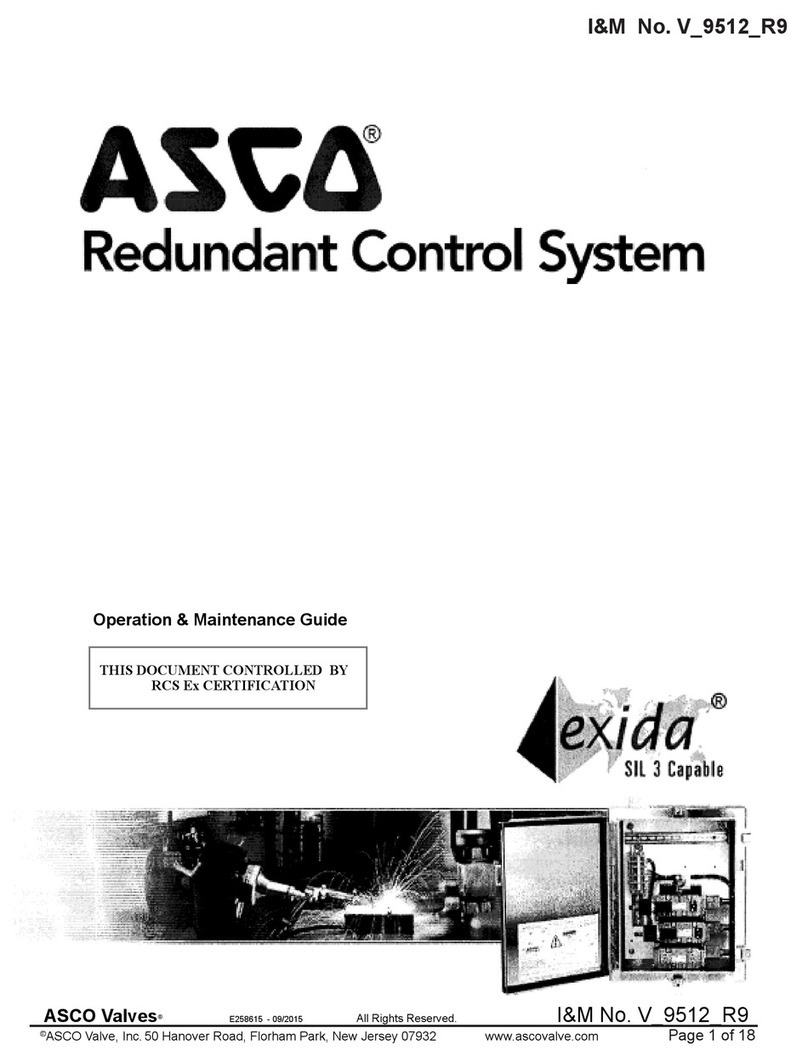
Asco
Asco RCS Operation & maintenance guide
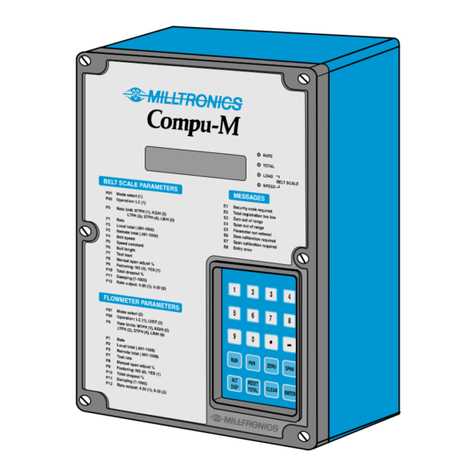
Milltronics
Milltronics COMPU-M instruction manual
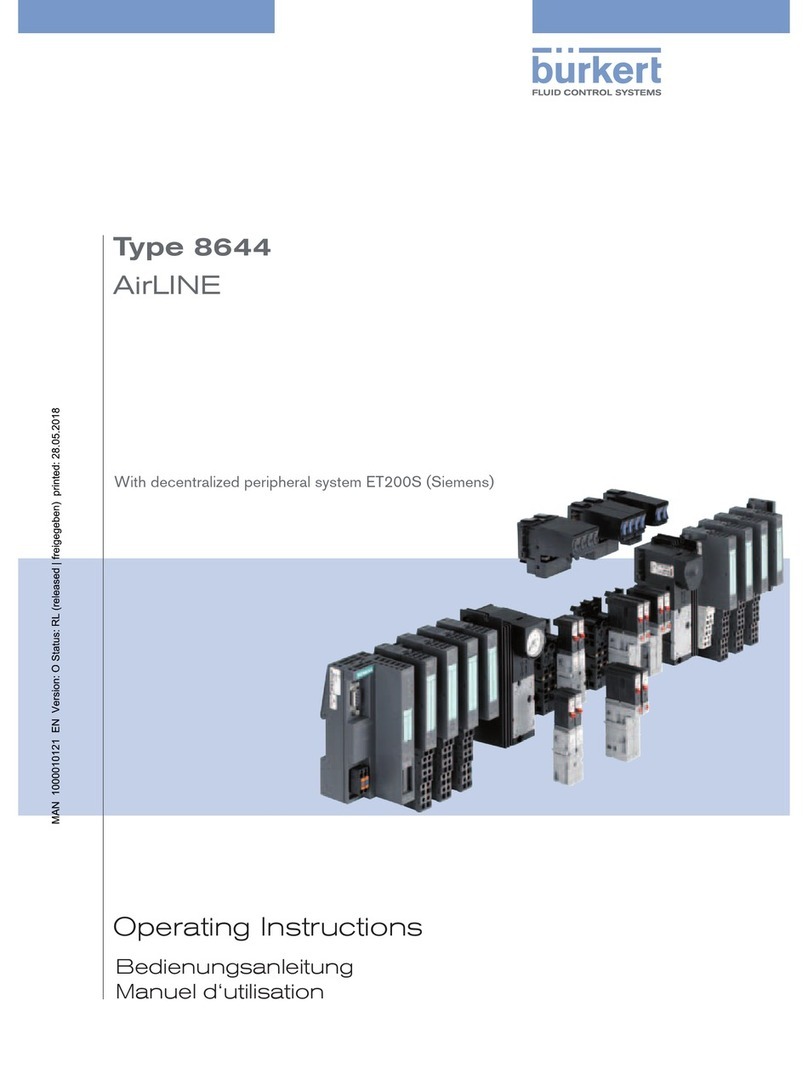
Burkert
Burkert 8644 AirLINE operating instructions
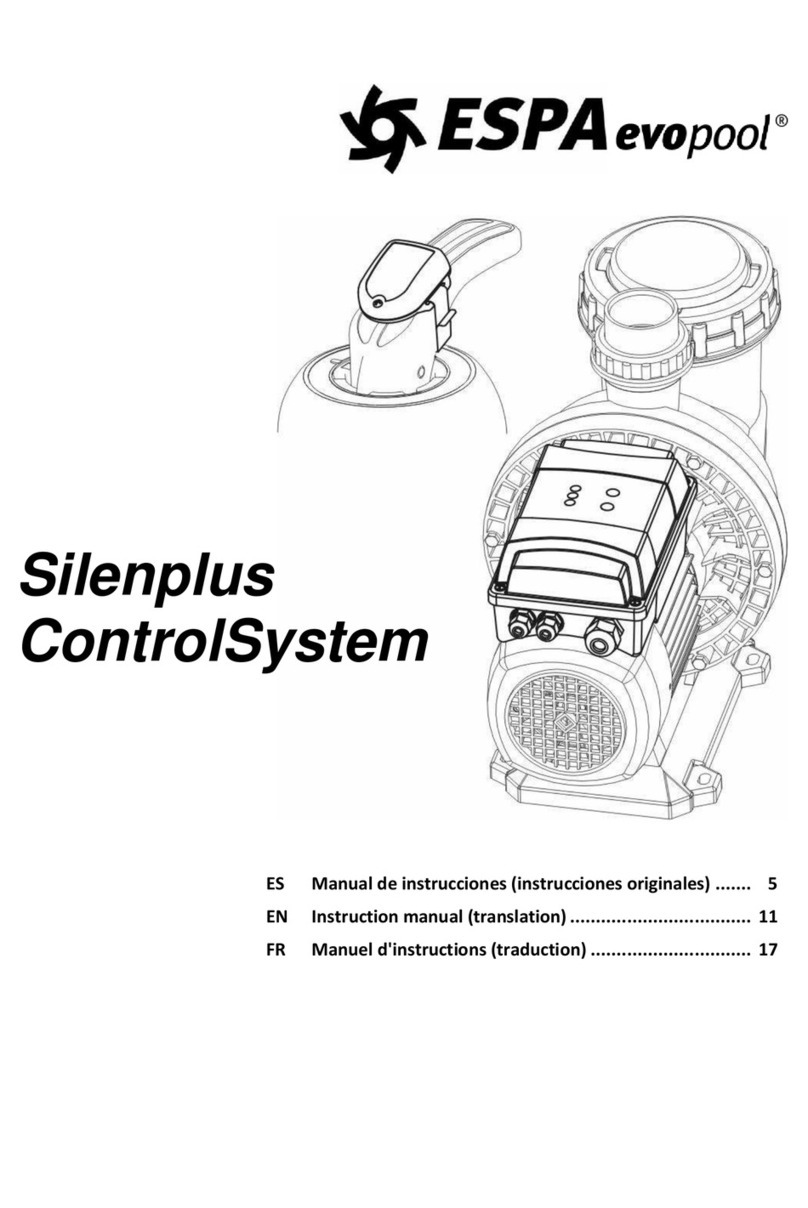
ESPA evopool
ESPA evopool SilenPlus instruction manual
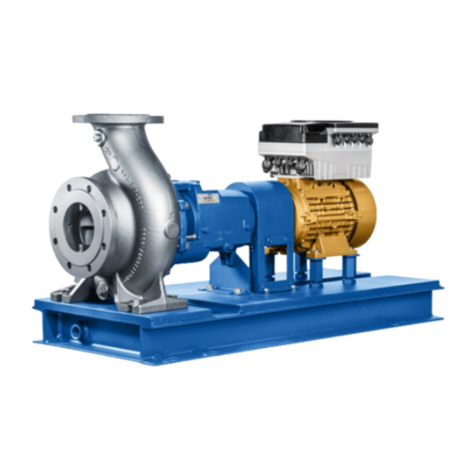
KSB
KSB Guard Installation & operating manual
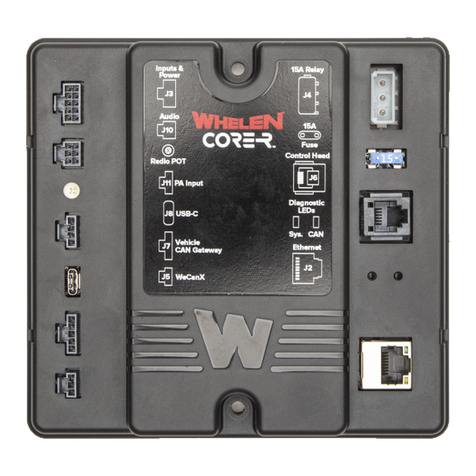
Whelen Engineering Company
Whelen Engineering Company Core R C399R manual
